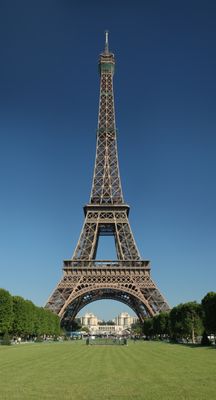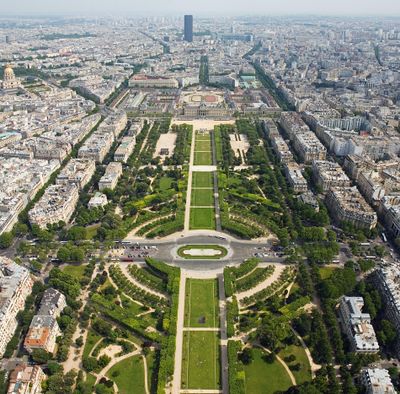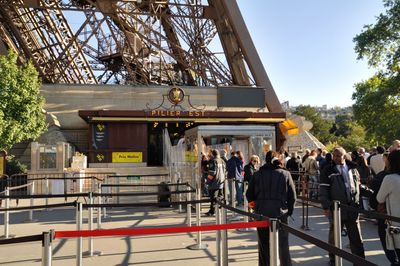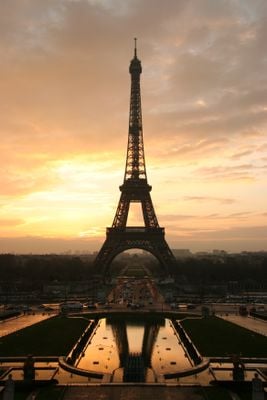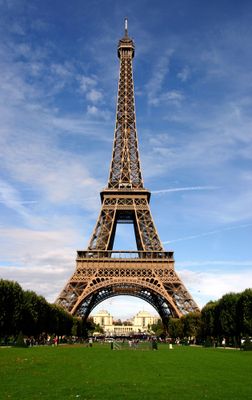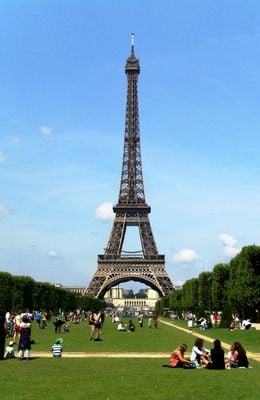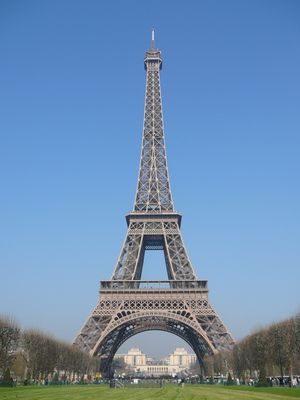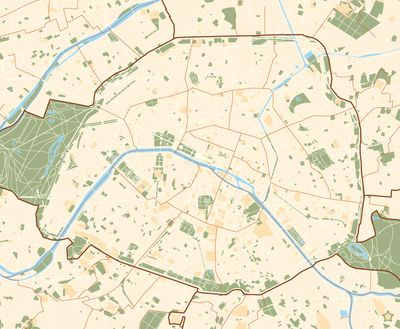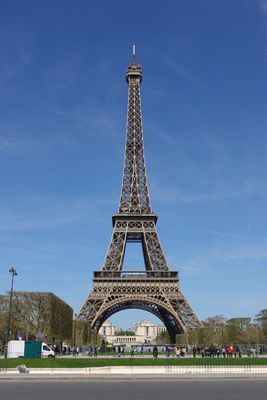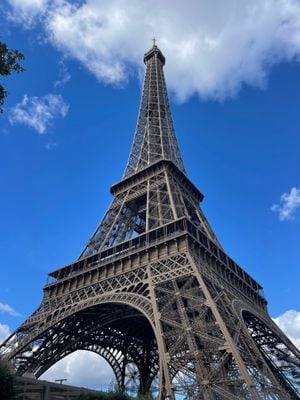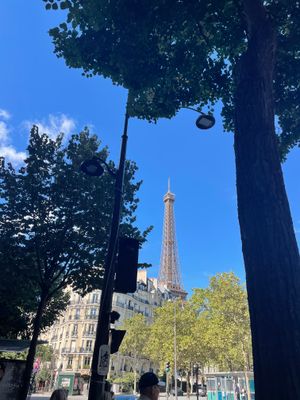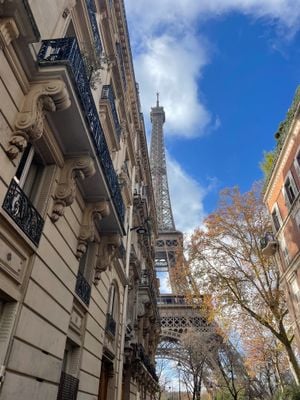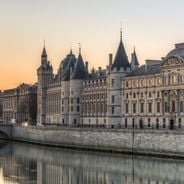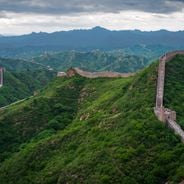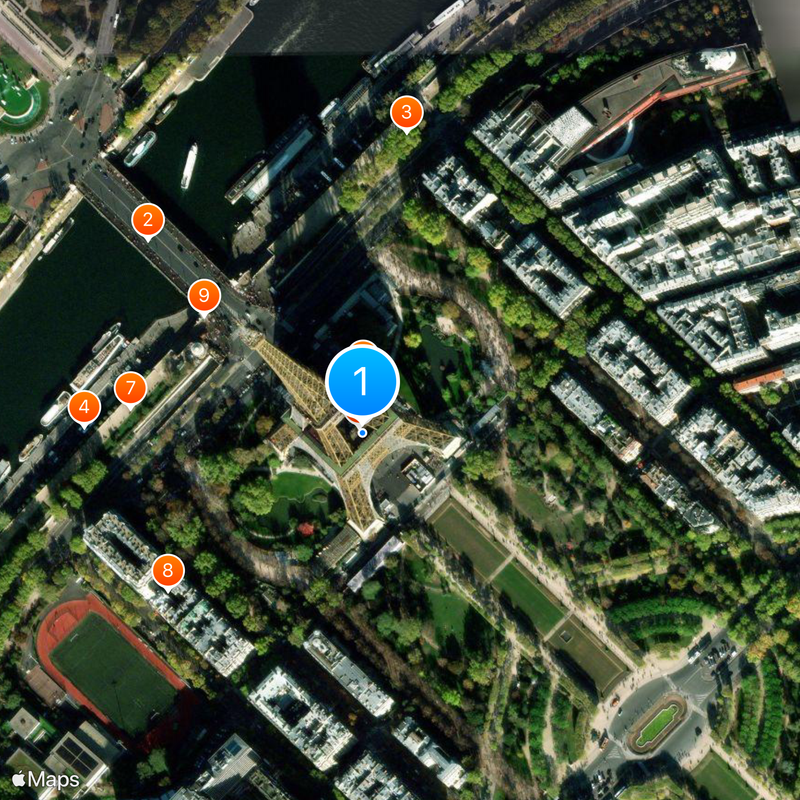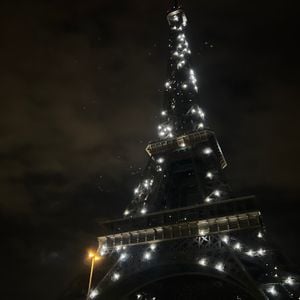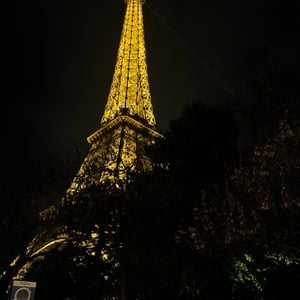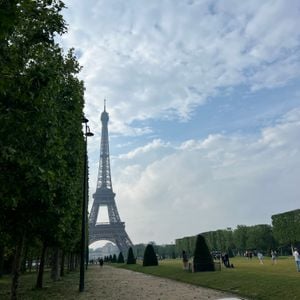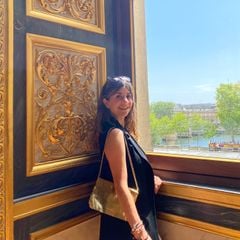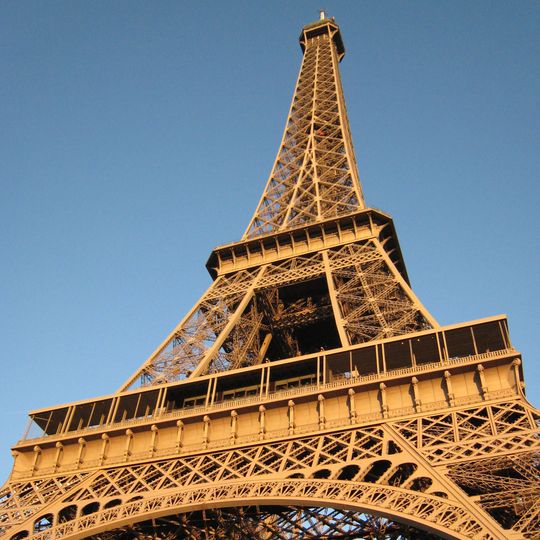
Eiffel Tower, Iron tower in Champ de Mars, France
The Eiffel Tower is an iron lattice structure on the Champ de Mars in the 7th arrondissement of Paris, standing 324 m tall including its antenna. Four arched pillars at ground level taper upward through three observation platforms toward the summit, with the open framework built from riveted girders.
Gustave Eiffel and his engineers built the tower between 1887 and 1889 as a temporary monument for the World Fair celebrating the hundredth anniversary of the French Revolution. City authorities initially planned its demolition in 1909, but its usefulness as a wireless transmission station saved the structure from destruction.
The tower transmits television and radio signals across the region while appearing as a widely recognized emblem of French engineering on postcards, advertisements and souvenirs. For Parisians it forms part of the everyday skyline, while visitors treat it as a highlight on nearly every travel itinerary.
Lower platforms can be reached by stairs or elevators, while the top level requires lift access only. Advance booking is recommended to avoid waiting times that may exceed two hours during busy seasons, with security checks carried out at the entrance.
The structure expands up to 15 cm during heat, causing the summit to lean away from the sun. The original 1889 elevator mechanism still operates in one of the legs.
Location: 7th arrondissement of Paris
Inception: January 28, 1887
Architects: Stéphen Sauvestre
Official opening: March 31, 1889
Floors above the ground: 3
Elevators: 8
Height: 330 m
Accessibility: Rolstoelontoegankelijk
Fee: 10-25€
Made from material: wrought iron, steel, puddled iron
Operator: Société d’Exploitation de la Tour Eiffel
Part of: banks of the Seine
Address: Av. Gustave Eiffel, 75007 Paris, France
Opening Hours: Maandag-Zondag 09:00-23:45
Website: https://toureiffel.paris/it
GPS coordinates: 48.85830,2.29448
Latest update: December 14, 2025 17:14

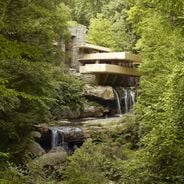
This collection presents significant architectural works from different periods and continents. From medieval cathedrals to contemporary skyscrapers, the selection documents the technical and aesthetic development of building design. The listed buildings were created by influential architects and...
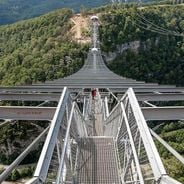
This collection brings together some of the most technically ambitious structures ever built, from record-breaking skyscrapers and suspension bridges to high-speed roller coasters that push the boundaries of what steel and concrete can achieve. These sites span continents and represent decades of...
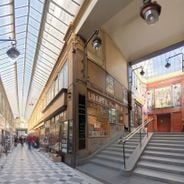
Paris combines historic architecture with cultural institutions in ways that have drawn couples for generations. The city offers a mix of 19th-century parklands, bridges spanning the Seine, and street cafes that invite lingering. From the galleries of the Louvre to the cobbled paths of Montmartre,...
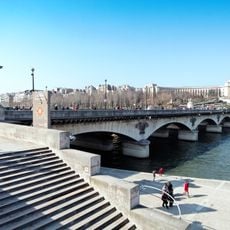
Pont d'Iéna
245 m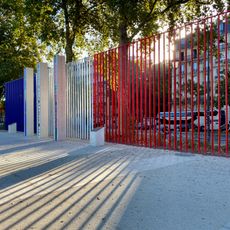
National Memorial to the Algerian War and the Battles of Morocco and Tunisia
259 m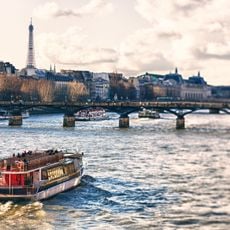
Vedettes de Paris
237 m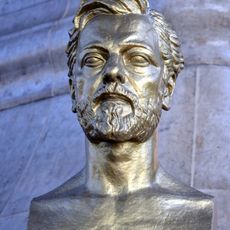
Gustave Eiffel
48 m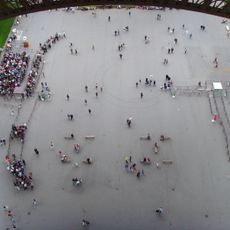
Esplanade des Ouvriers-de-la-Tour-Eiffel
5 m
Promenade Marie-de-Roumanie
199 m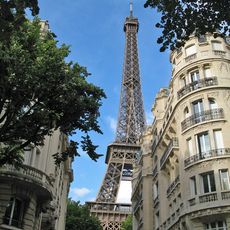
Scenic viewpoint
213 m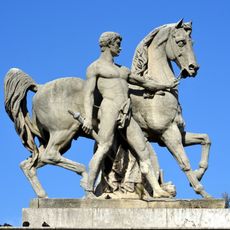
Le Cavalier romain
168 m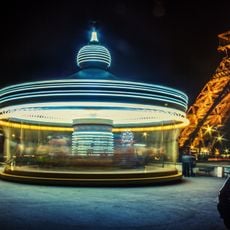
Carousel of the Eiffel Tower
156 m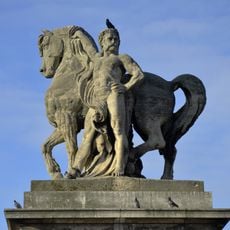
Le Cavalier gaulois
166 m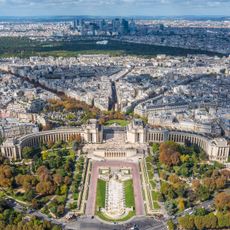
Tour Eiffel 3e étage
4 m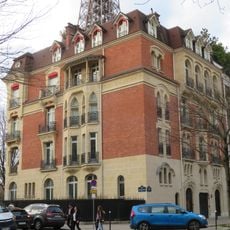
Hôtel Rateau
226 m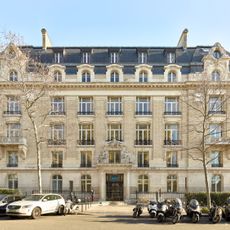
Octave Gréard
229 m
Quai Branly Museum Vertical Garden
308 m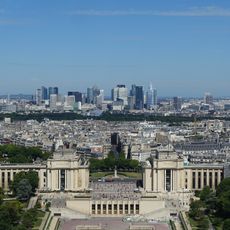
Tour Eiffel 2e étage
4 m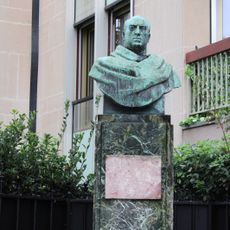
Bust of Lucien Guitry
326 m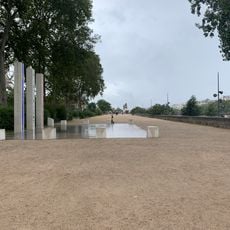
Promenade du Quai Branly
218 m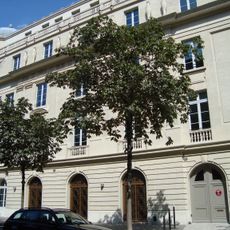
1 avenue Charles-Floquet, Paris
187 m
Fountain
278 m
Eiffel pavilion
23 m
Ferrié pavilion
27 m
Buffets
30 m
Buffets
29 m
Buffets
18 m
PA_108
136 m
PA_1431
7 m
Work of art, statue
170 m
Memorial
223 mReal people, real opinions — but not verified.
Visited this place? Tap the stars to rate it and share your experience / photos with the community! Try now! You can cancel it anytime.
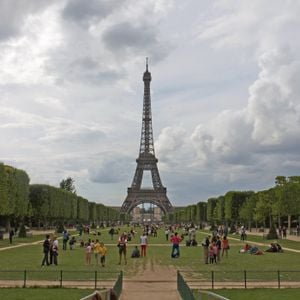

Must see
Our beautiful tower, still just as stunning. It's a pity that you can no longer pass underneath without paying the entrance fee.
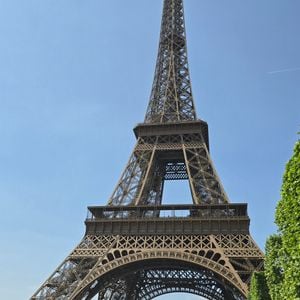
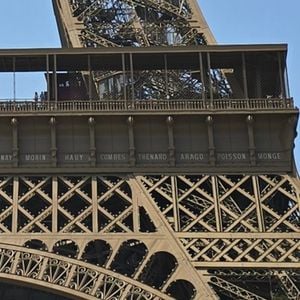
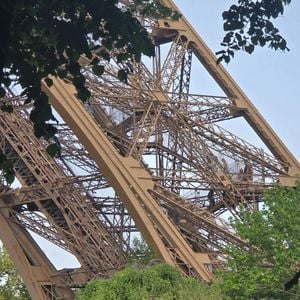
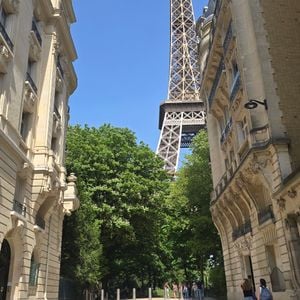
a must-visit place in Paris!
A must-see if you come to Paris
Discover hidden gems everywhere you go!
From secret cafés to breathtaking viewpoints, skip the crowded tourist spots and find places that match your style. Our app makes it easy with voice search, smart filtering, route optimization, and insider tips from travelers worldwide. Download now for the complete mobile experience.

A unique approach to discovering new places❞
— Le Figaro
All the places worth exploring❞
— France Info
A tailor-made excursion in just a few clicks❞
— 20 Minutes

